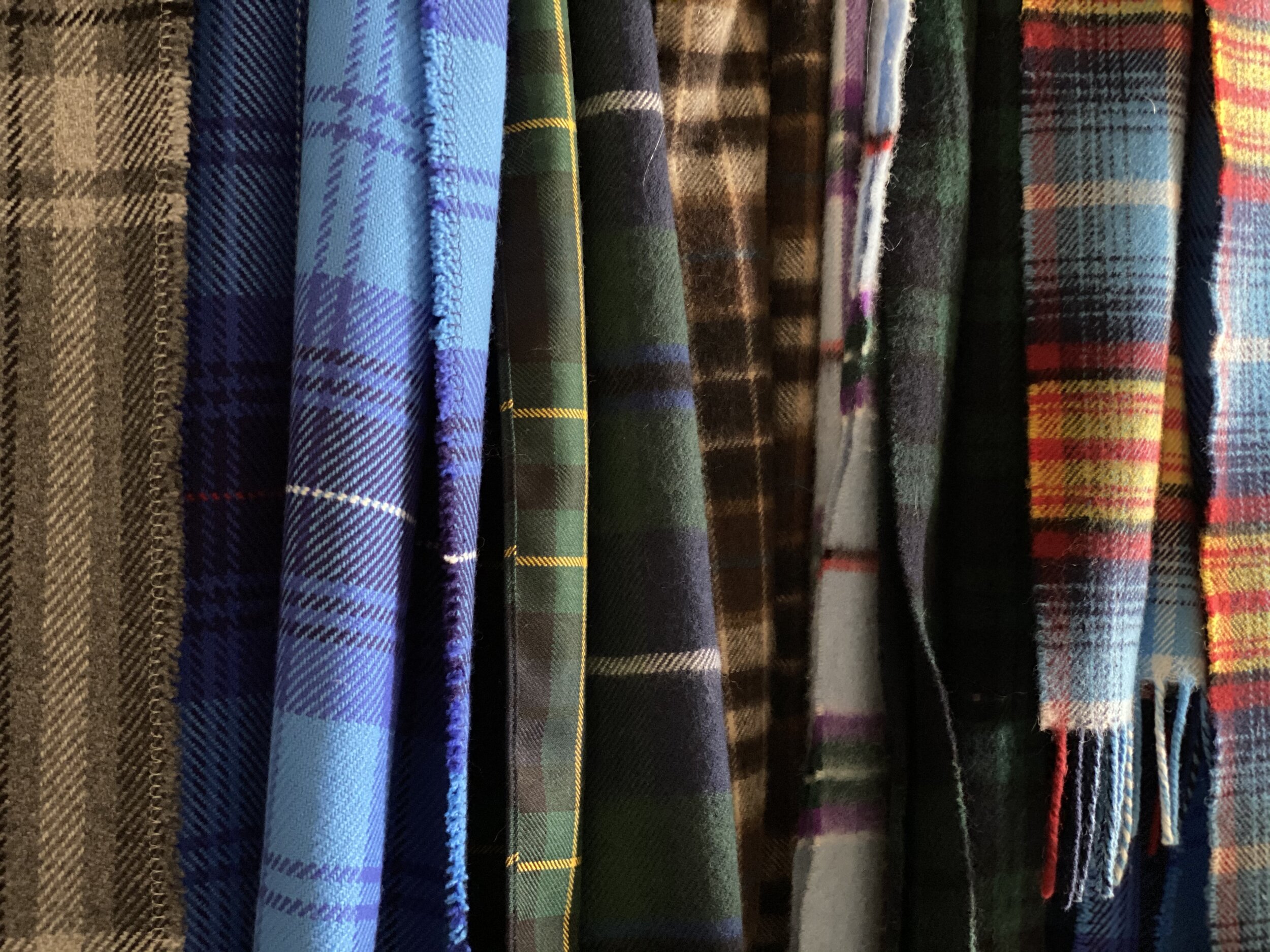Nothing says “Scotland” as universally around the world as tartan. The colorful, criss-cross patterned fabric is considered the symbolic national dress of the country. While the wearing of tartan dates back hundreds of years, the care, preservation and registration of the thousands of distinct tartan patterns is a relatively recent phenomenon. The popularized clan tartans so many are familiar with today were largely the result of an invented tradition, created in the mid-nineteenth century when tartans were designed and artifically assigned to various clans and families.
A first attempt at naming and registering tartans was begun in 1815 by the Highland Society of London. Later such a caretaker’s role was passed between many individual organizations and registers took many forms, including - the Scottish Tartans World Registry, the international Tartan Index, and perhaps originally, the Scottish Tartans Society’s Register of All Publicly Known Tartans.
Today the role of maintaining the official list of tartans falls to the Scottish Register of Tartans, a role within the Scottish government established by legislative action in the Scottish parliament, but only as recently as 2008. The Scottish Tartans Authority, that had maintained the register prior, is today the only remaining non-governmental body dedicated to preserving, promoting, and protecting tartan although they no longer act as a registry.
Established in 1996, the STA was an spinoff of the Scottish Tartan Society founded in 1963. The STS lasted about 40 years but is now defunct. However the STS left a significant legacy in the form of the Scottish Tartans Museum and Heritage Center not in Scotland, but in Franklin, North Carolina, USA.
The Scottish Tartans Museum and Heritage Center, occupies a two story building in downtown Franklin, North Carolina. Photo courtesy project543.visitnc.com
Given the significance of tartan in Scottish culture and history, it is more than puzzling why there is no national tartan center or museum in Scotland. The Scottish Tartans Authority has long held plans to establish such a center. A feasability study was conducted back in 2015 with Stirling reportedly chosen as the most likely site. While the STA website promises updates it appears little has happened in the intervening years.
However the museum in North Carolina has survived financial challenges, recently closed a successful long-term lease agreement on their existing property, and continues to enjoy steady footfall from visitors worldwide. In our conversation with curator Daniel Williamson, we discuss the museum’s founding and history, its collection and displays, and plans for the future…
The museum’s collection of tartans is extensive. Photo courtesy RomanticAsheville,com
The museum is more than a collection of tartans as exhibits also include vignettes of Scottish lifestyles through the ages. Photo courtesy Scottish Tartans Museum
In addition to tartans, the museum showcases many style of traditional Scottish dress including kilts and more. Photo copyright Sharon Elizabeth Adams Bramlett/The Vintage Traveler (see link below for her blog about the museum).
KEY POINTS:
05:45 - How the museum was established by the Scottish Tartans Society
08:35 - Where did the original collection of artifacts originate from?
09:45 - Significant displays to be seen at the museum
17:45 - Most unusual item to be seen at the museum
24:00 - Museum membership program
28:45 - History of Scots in North Carolina
32:00 - Educational mission of the museum
36:00 - Importance of gift shop to museum’s financial well being.
39:05 - What does the future hold?
•Scottish Tartans Museum (website)
•Scottish Tartans Authority (website)
•The Vintage Traveler (blogpost museum review)







